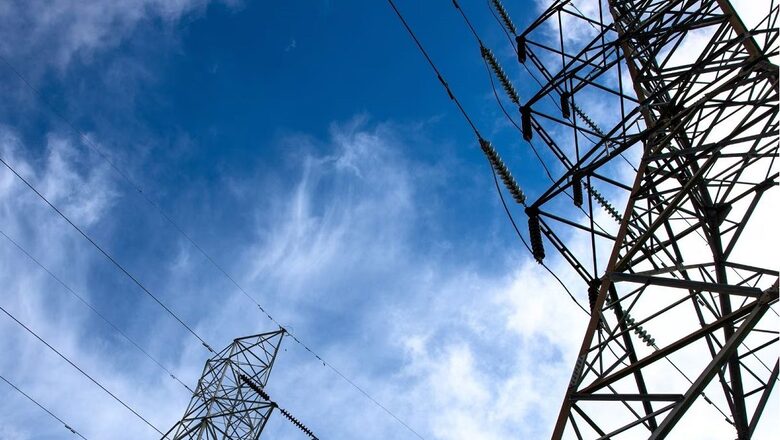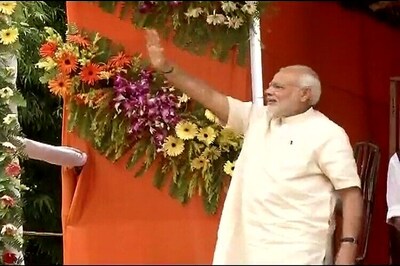
views
After ensuring last-mile connectivity through central schemes, that is, connecting all households and villages with the power grid, the Indian government is contemplating setting a goal of providing uninterrupted 24×7 electricity supply throughout the country by March 2025. Following the success of two flagship schemes—the Deen Dayal Upadhyaya Gram Jyoti Yojana (DDUGJY) and the Pradhan Mantri Sahaj Bijli Har Ghar Yojana (Saubhagya) —which have connected all villages and households with the power grid in the last decade, the government is now focused on facilitating unrestricted power supply in both rural and urban India.
This strategic goal is part of an initiative aimed at significantly improving the reliability and accessibility of electricity services for the entire population. The proposed deadline underscores the government’s commitment to ensuring a consistent and continuous power supply on a national scale, which would contribute to the overall socio-economic development and illuminate India’s path to becoming a developed country by 2047. Government insiders indicate that if the current administration is re-elected, the pursuit of 24×7 electricity will be seamlessly incorporated into the ongoing agenda of implementing reforms.
India’s strides in renewable energy capacity in the last decade have enabled the country to dream big when it comes to electricity supply. This is also in tandem with the improving health of state-owned DISCOMs even as challenges remain.
Pursuing Power For All
India’s commitment to power generation and universal electrification has been a stepping stone for the county’s power revolution, paving the way for Amrit Kaal. In the last decade, DDUGJY and the subsequent Saubhagya Yojana have achieved last-mile connectivity. These schemes have ensured that electricity becomes accessible to all.
All states declared the electrification of every village on April 28, 2018, under DDUGJY, and all ‘willing households’ were declared electrified by March 31, 2019, under Saubhagya. A total of 18,374 villages were electrified through DDUGJY, while Saubhagya facilitated the electrification of approximately 2.86 crore households.
The government’s endeavours to promote energy efficiency have yielded noteworthy outcomes. Through the Unnat Jyoti by Affordable LEDs for All (UJALA) initiative, the cost of procuring LED bulbs saw a substantial decrease of nearly 90 per cent between 2014 and 2019, dropping from Rs 310 to Rs 39.90. To date, more than 36.86 crore LED bulbs have been disseminated through this program. This not only lowered electricity expenses for households but also fostered domestic manufacturing of LED bulbs, aligning with the objectives of the ‘Make in India’ campaign. Consequently, India has experienced widespread adoption of energy-efficient lighting solutions, contributing to a reduction in energy consumption and a more environmentally friendly landscape.
Unlocking the Power of Renewables
With more households connected to the power grid, the government recognised the need to cater to a soaring demand while sticking to its sustainable development goals. This made it imperative for the nation to unlock the power of renewables.
India’s journey towards enhanced power generation while remaining committed to a greener future has gained global recognition. With the addition of over 175 GW of generation capacity in the past nine years, India has transitioned from a power deficit to a power surplus nation. The country’s commitment to renewable energy sources has played a pivotal role in achieving this feat.
As of November 2023, India successfully achieved a significant combined installed capacity of 179.57 GW in renewable energy sources, encompassing diverse elements such as wind power, solar power, biomass/co-generation, small hydropower, waste to energy, and large hydro. This remarkable progress aligns with India’s ambitious targets, including a goal to reduce the carbon intensity of the nation’s economy by over 45 per cent by the end of the decade.
Additionally, the country aims to achieve 50 per cent of its cumulative electric power from renewables by 2030 and aspires to reach net-zero carbon emissions by 2070. A pivotal part of this green energy initiative involves working towards installing an impressive 500 GW of renewable energy capacity by the year 2030, showcasing India’s commitment to sustainable and environmentally friendly energy practices.
The remarkable growth of solar and wind energy capacity has cemented India’s position as a global leader in renewable energy adoption. Today, India stands 4th globally in Renewable Energy Installed Capacity, with 43 per cent of its total installed electricity capacity coming from non-fossil energy sources.
Solar power currently accounts for about 38 per cent of the total renewable energy capacity. India ranks third in Asia and fourth in the world in terms of its solar power generation. It also ranks 4th globally in terms of wind power capacity. India is home to some of the world’s largest solar parks India. Meanwhile, the country has crossed almost 4 GW of rooftop solar capacity this year and will be adding another 4 GW in the next two years.
Improving DISCOMs
Prolonged power cuts are a major point of contention for the general public as well as for industries looking to set up power-intensive manufacturing units. In the last decade, power cuts in many states have been reduced considerably but remain a challenge in states like Bihar, Madhya Pradesh, Telangana, and Himachal Pradesh where rural power supply hours remain inconsistent.
A significant challenge arises from the financial stability of state-owned distribution companies (DISCOMs), responsible for investing in and ensuring a continuous power supply. If round-the-clock power supply is to be ensured to the masses, the health of state-owned DISCOMs must be reined in.
Officials emphasise that efforts to reform DISCOMs have gained momentum, primarily driven by three key initiatives: the Revamped Distribution Sector Scheme (RDSS), Late Payment Surcharge (LPS), and modifications to the open access scheme. The RDSS mandates DISCOMs to improve operational efficiency, cautioning about the potential loss of grants for various central schemes if enhancements are not implemented. The LPS is geared towards ensuring prompt payments to power generators, while the open access scheme facilitates power supply beyond the scope of DISCOMs.
The Modi government has placed tremendous importance on electricity in the last ten years and has achieved significant milestones in the process. With an enhanced round-the-clock cover of electricity supply, India will not only be a better place for its households but will be more adept at attracting major industries and businesses which rely on unrestricted electricity for their operations.
Views expressed in the above piece are personal and solely that of the author. They do not necessarily reflect News18’s views.




















Comments
0 comment